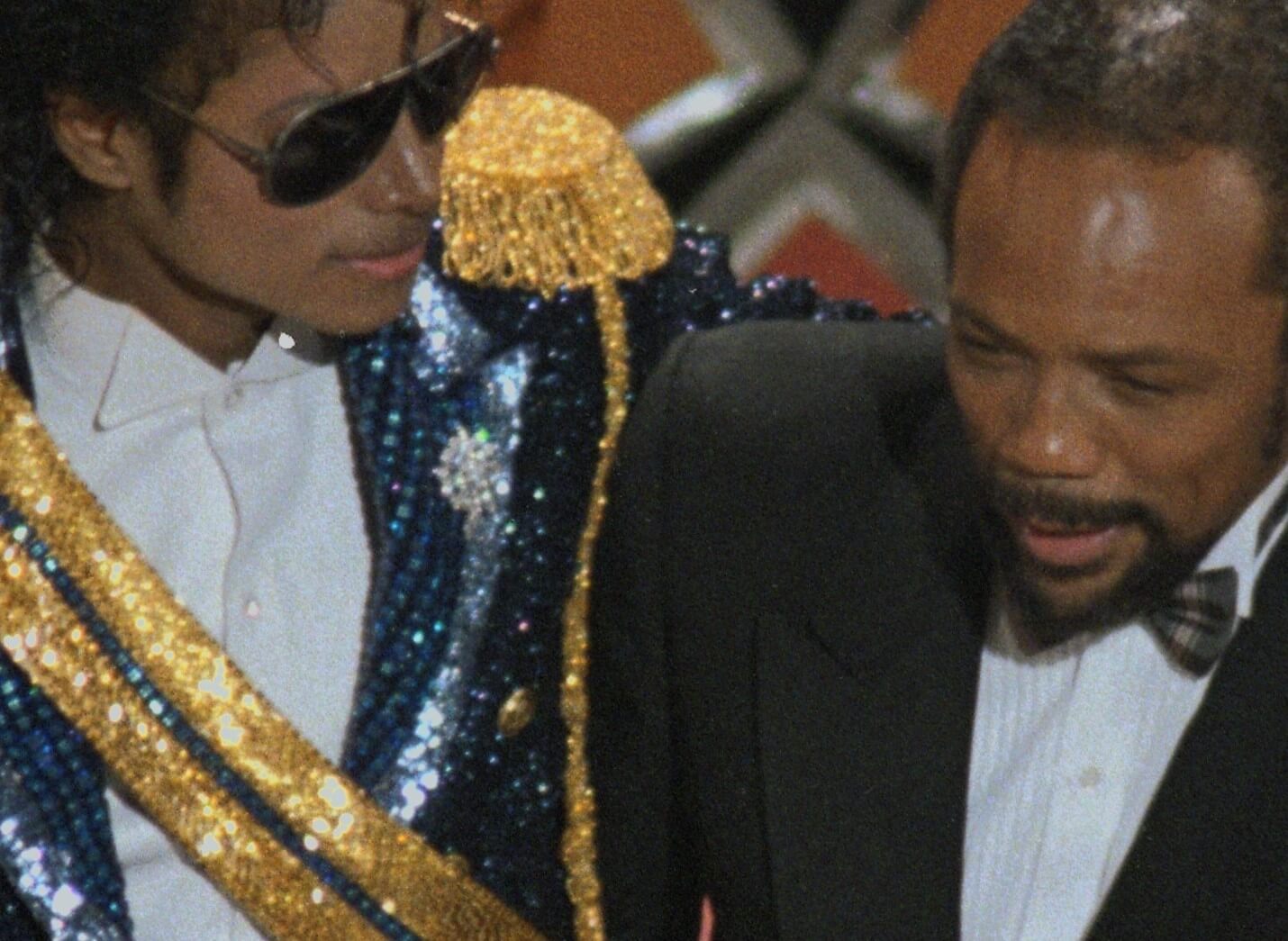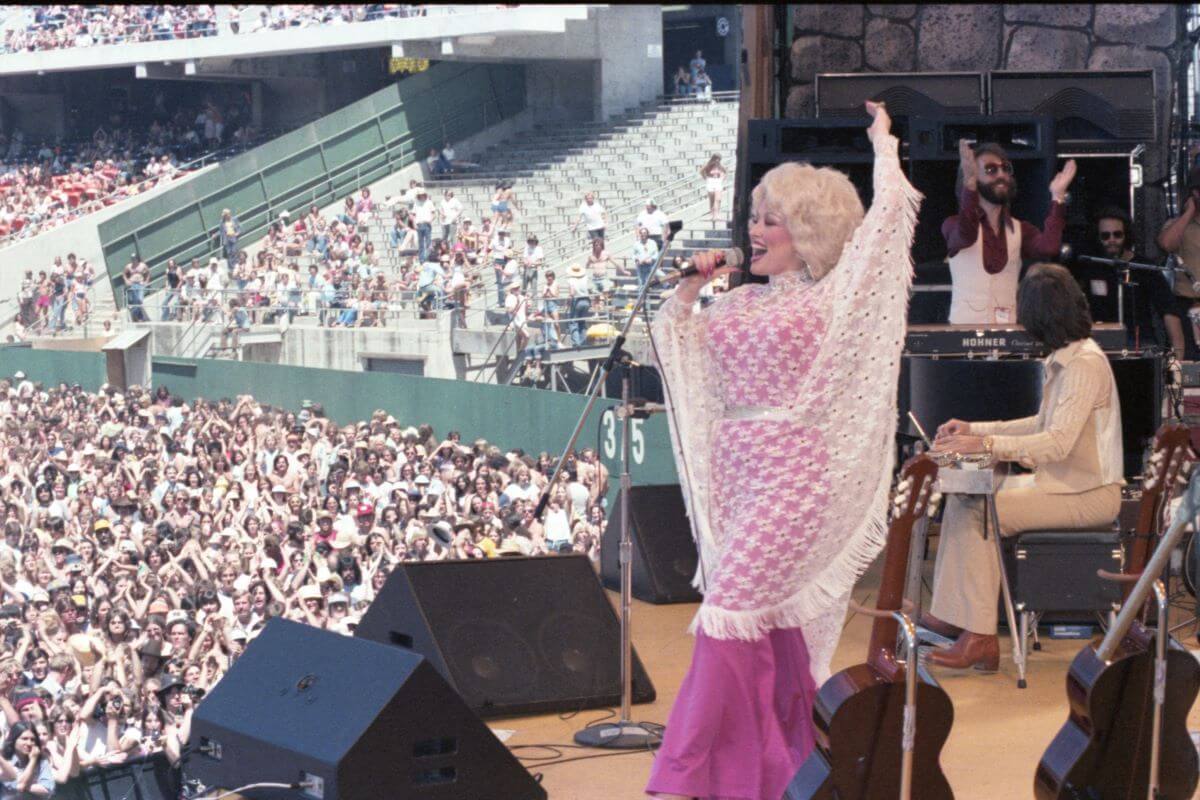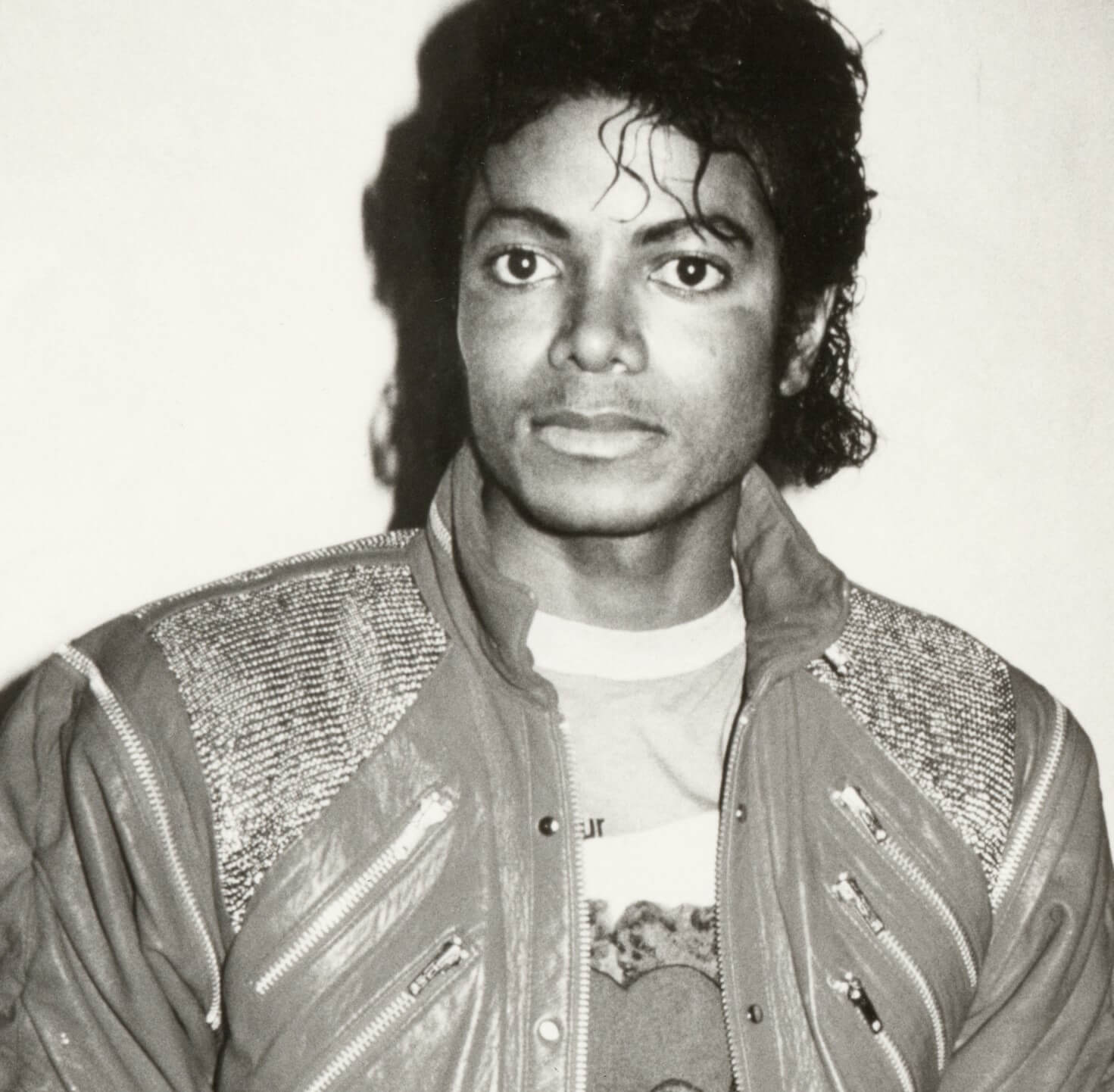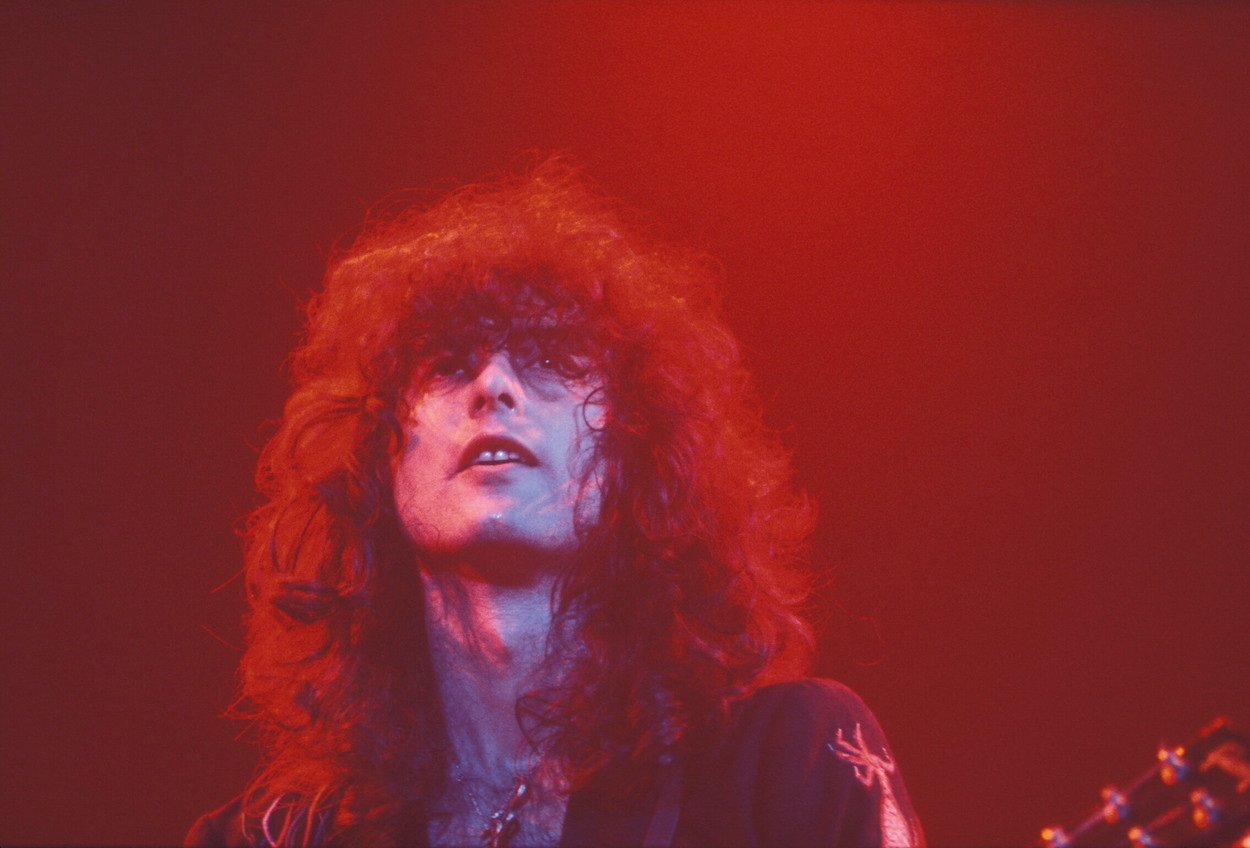
Led Zeppelin: Jimmy Page Was Wrong to Dislike the ‘Houses of the Holy’ Cover
Fifty years after Led Zeppelin released Houses of the Holy, we know its best songs rank among the band’s finest. After a two-month delay because of the album artwork, Zep released their fifth album to a ravenous fan base that helped it go gold in less than two weeks. Despite the delay, Jimmy Page still hated the Houses of the Holy cover, and 50 years later, we know just how wrong he was.
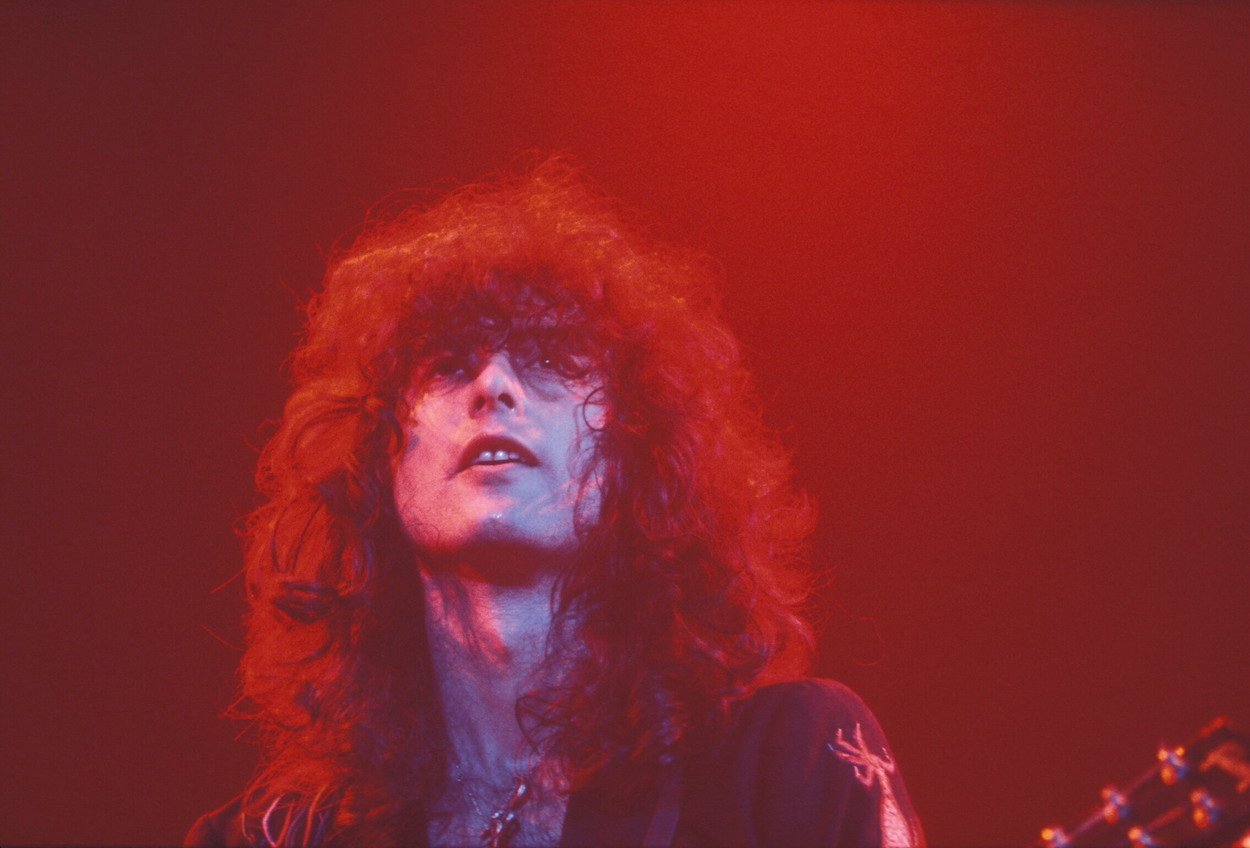
Jimmy Page and Led Zeppelin fired the original ‘Houses of the Holy’ album cover designer
Just say the words Houses of the Holy, and you can practically see the cover: The glowing orange sky, kaleidoscopic-colored rocks, and naked children climbing on them toward the summit. Page hated the final design, but it beats the alternative — an image of a tennis racket.
Storm Thorgerson, a founder of the design firm Hipgnosis that created several iconic album covers, originally proposed having an image of a tennis racket. The country club vibes didn’t sit well with Led Zeppelin, so they fired Thorgerson and hired his partner, Aubrey Powell, instead.
Powell delivered the Houses of the Holy cover fans know and love, but Page wasn’t a fan.
“When the proofs for the album came back, they didn’t look anything like the original artwork,” Page said, according to Led Zeppelin FAQ author George Case. “Again, we were on a deadline, and there wasn’t much to be done. I suppose it doesn’t matter now.”
Page disliked the sleeve for Houses of the Holy almost as much as the Led Zeppelin III jacket, and history proves how wrong he was.
History proves Page was wrong to dump on the ‘Houses of the Holy’ cover
Led Zeppelin released a masterpiece when their fourth album came out in late 1971. They didn’t try to replicate themselves sonically, and though Page hated the Houses of the Holy cover, it was just as impressive as its predecessor on multiple levels.
The otherworldly setting is unlike any other Zep album cover. Their first four records featured jackets that were earthbound (a burning blimp on I) and nearly organic with their earth tones (especially II and IV). Houses of the Holy’s neon orange hue over rainbow-colored stones stood in stark contrast to any other Led Zeppelin album.
Powell hand-colored the photo on the Houses cover. The bright orange sky perfectly represents the album. Led Zeppelin’s fifth record is a bright one — musically, thematically, and production-wise. Page has said the band had fun making the album. That joy comes through on downright positive songs such as “The Song Remains the Same,” “Over the Hills and Far Away,” “Dancing Days,” and “The Ocean.” The production is equally as bright — listeners hear almost every note clearly.
Led Zeppelin’s name doesn’t appear on the Houses of the Holy cover. It didn’t matter. Whether or not you know it’s Led Zeppelin, you almost can’t help but pause to look at it. That’s an impressive feat for an album from 1973.
Page wasn’t a fan of the jacket for Zep’s fifth album. Fifty years later, we understand how classic the Houses of the Holy cover was and how wrong Page was for disliking it. Five decades later, we know it’s one of Led Zeppelin’s best album covers that perfectly represents the music inside.
The album grew into a classic, just like its cover
Page bagged on the cover, and professional reviewers weren’t kind to Houses of the Holy in 1973.
Rolling Stone levied a negative review in 1973, and it wasn’t the only publication that felt Led Zeppelin lost its way on its fifth album. Legacy reviews 50 years later label Houses as a Zep classic. The band didn’t try to live up to anything they did before and created a classic nonetheless.
Fans loved the music. They sent the album to No. 1 on the Billboard album chart six weeks after its release; it spent 106 weeks among the top 20 records. Only Led Zeppelin’s first, second, and fourth studio albums spent more time on the charts. The RIAA certified Houses of the Holy gold (500,000 in sales) less than two weeks after it hit shelves.
The jacket, which Wired wrote was another in a string of standout sleeves, is just as classic as the music inside. Jimmy Page didn’t like the Houses of the Holy cover, and fifty years later, we know how wrong he was.
For more on the entertainment world and exclusive interviews, subscribe to Showbiz Cheat Sheet’s YouTube channel.
